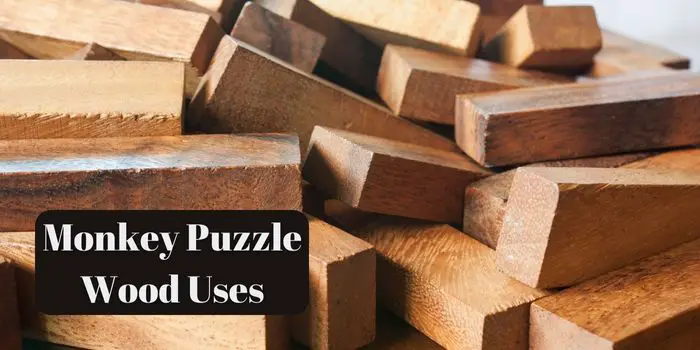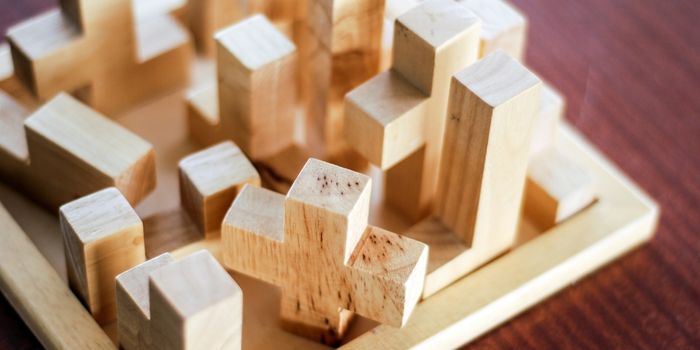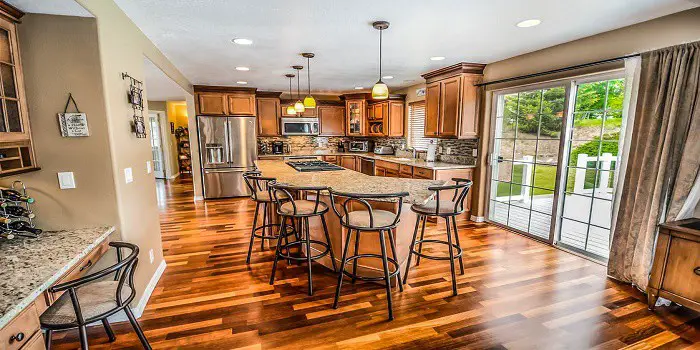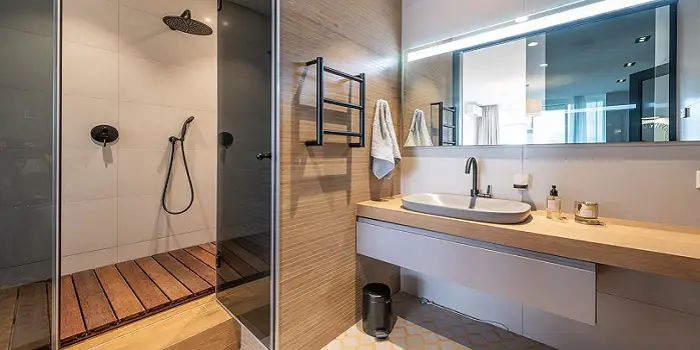
The Monkey Puzzle tree is an evergreen conifer that thrives in the temperate rainforests of south-central Chile and adjacent areas in Argentina.
In Chile, the species can live among two distinct ecosystems – the Andes mountains and coastal regions due to their high salt resistance.
Chile’s National Tree, the monkey puzzle, Despited being introduced to many gardens as an ornamental plant in Europe and the USA, the species remains highly threatened in its natural range.
Monkey Puzzle Wood Uses
Due to its extremely high durability and property to resist fungal decay, you can use monkey puzzle wood for beams in buildings, piers, roofs, furniture, boat structures, turned objects, and small specialty wood items.
Commercially the wood is also used for building bridges, making plywood and veneers, paper (pulpwood), and a few other industrial uses.
The monkey puzzle tree is also famous among many bonsai enthusiasts because it is slow-growing and can be easily trained and shaped.
What’s in the Name – Monkey Puzzle?
The name ‘monkey puzzle’ was created in the mid-1800s by Charles Austin, a well-known lawyer, when he saw the tree for the first time and said that monkeys would be puzzled trying to climb the spiny branches.
Fortunately, monkeys never had to solve this mystery because there are no monkeys in Chile or Cornwall. Also, very few monkey puzzle trees are left behind across the world.
The IUCN Red List of Threatened Species lists the species as endangered because of illegal felling and habitat fragmentation in its native habitat.
The monkey puzzle trees are no longer harvested for commercial uses.
How Good is Monkey Puzzle Wood for Turning?
The Monkey Puzzle wood (also known as Chilean pine) is virtually white after removing the bark (and should peel off quite easily). The wood generally carries very even grain, and it’s simple to turn.
However, sharp woodworking tools are often required, as the tree contains some silica in its wood. Hand and machine tools may be used to produce clear areas of wood without difficulty.
However, knots in sections might be difficult to work with hand and machine tools because of the difference in density between the two regions.
So, if you are lucky enough to find monkey puzzle wood and plan to use it for a specialty project, remember to take the time to enjoy the wood and appreciate its history.

Monkey Puzzle Wood Grains, Colors, and Texture
The grain of monkey puzzle wood is usually straight, with a fine to medium uniform texture.
The heartwood color ranges from light brown to yellow or red, while the sapwood is paler and not clearly defined.
The wood may sometimes be afflicted by blue/gray fungal staining if not dried properly, which can add decorative appeal in specific applications.
While the wood possesses no characteristic odor, the main drawback is it’s rated as perishable because of its limited resistance to insect attacks. This means it must be treated with a preservative to extend its serviceable life if used outdoors.
When it comes to toxicity, severe reactions are rarely seen with this type of wood (in the Araucaria genus). But minor skin irritation is often reported.
Can I Buy Monkey Puzzle Wood Online – What About the Pricing and Availability?
I can’t say this for sure because monkey puzzle harvesting is restricted in its natural range.
Only felled ornamental trees outside of that area are occasionally available. As such, prices for this wood type will be moderately high if you happen to find some.
The best way to get your hands on some monkey puzzle wood is to find an arborist or tree removal company in your area that has recently removed a monkey puzzle tree near you.
Online, you can search on websites like eBay or Etsy, where they occasionally have it for sale.
Pricing for a small slab of monkey puzzle wood can range in thousands of dollars, so be prepared to spend a pretty penny if you want to use this unique wood for your next project.
Before you buy any, check with your local city ordinance to ensure it’s legal to possess the wood.
Some places restrict or outright ban the possession of monkey puzzle trees and their wood because they are an endangered species. So, it’s better to avoid getting into trouble with the law.
Even if you find some monkey puzzle wood for sale, remember that it’s not a sustainable resource.
Final Thoughts
Monkey puzzle wood is most commonly used for decorative applications or as a novelty item.
Also, the monkey puzzle is worth considering if you are looking for an exciting wood for a small project or want to try your hand at bonsai.
If you do decide to use monkey puzzle wood, be prepared to spend a lot of money because it’s not a cheap material.
Also, it’s an endangered species, so it’s essential to consider this resource’s sustainability before you use it for your next project.

Hi, I am Mark Garner a professional carpenter, woodworker, and DIY painter. I live in the small city of Peoria, Arizona as a semi-retired woodworker. I have started this blog with a simple motive to help you with my wood experience in this sector. If you like to know more about what I love doing and how it all got started, you can check more about me here.





